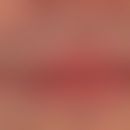ClassificationThis section has been translated automatically.
Uratic stones belong to the category of urinary stones (see types of urinary stones).
Based on their aetiology, urate stones are divided into purely uric acid stones and ammonium urate stones (Kasper 2015).
In contrast to pure uric acid stones, urate stones are also classified as infectious stones (Kuhlmann 2015).
OccurrenceThis section has been translated automatically.
Uric acid stones occur in about 10 % - 15 % of all kidney stones in Europe. In countries with hot climates, the prevalence is up to 50 %. About one third of patients also have hyperuricemia.
Pure ammonium-urate stones are among the rarer stones with 0.5 % - 1 % (Herold 2020 / Seitz 2018 / Wendt- Nordahl 2014 / Keller 2010).
You might also be interested in
EtiologyThis section has been translated automatically.
- Ammonium-urate stones:
These form preferentially in a pH range of > 6.5.
The causes for the stone formation can be:
- Infection
- Malabsorption
- Malnutrition
- Highly uric acid, vegetarian diet (Seitz 2018).
- Pure uric acid stones:
Uric acid represents the end product of purine metabolism. Pure uric acid stones occur preferentially in constantly acidic urine (pH < 5.8 [Seitz 2018]) and with concomitant high uric acid excretion (Kasper 2015).
The causes may be exogenous due to:
- faulty nutrition (e.g. a high animal protein intake)
or endogenous by e.g.:
- Hyperuricemia
- catabolic metabolic conditions (e.g. metabolic syndrome)
- enzyme defects
- myeloproliferative disorders
- drugs
- tumor lysis syndrome
(Seitz 2018)
DiagnosticsThis section has been translated automatically.
Since ammonium urate stones are most frequently associated with infection, a urine culture should be taken in any case (Kuhlmann 2015).
ImagingThis section has been translated automatically.
Sonography: Ultrasound is the first choice both in the acute situation and in routine examinations (Seitz 2018).
- Detection of a calculus (small stones are sometimes not visible on ultrasound).
- Renal congestion
- Ectasia of the renal pelvis (Herold 2020).
X-ray: Uratic stones are described as non-shadowing (Seitz 2018) or weakly shadowing on X-ray (Kuhlmann 2015).
Native CT: Native CT is now considered standard diagnostics for V. a. urate stones. The sensitivity is between 94% - 100% and the specificity between 92% - 100% (Seitz 2018).
CT is particularly recommended if no calculus is detectable on sonography and also if complications occur (Herold 2020).
LaboratoryThis section has been translated automatically.
The basic diagnosis of acute renal colic consists of:
Urinalysis:
- Urine test strips
- Micro- or macrohaematuria
- Leukocyturia
- Nitrite
- Protein
- Glucose
- Sediment (bacteria, crystals)
- Creation of a culture for germ differentiation and creation of an antibiogram
- Analysis of departed concrements
- 24h- collected urine:
- Uric acid (elevated in urate stones)
- Calcium (elevated in primary hyperparathyroidism)
- Oxalate
- Cystine
- Phosphate
- Dihydroxyadenine (DHA) in children (Herold 2020 / Schmelz 2006)
Blood test:
- Blood gas analysis
- small blood count
- electrolytes
- CRP
- Creatinine
- Urea
- Uric acid
- PTT and INR in case of probable intervention (Seitz 2018)
TherapyThis section has been translated automatically.
- Ammonium-urate stones:
In case of ammonium-urate stones there are different starting points:
1. in case of recurring infections, immediate antibiotic treatment according to the antibiogram.
2) Acidification of the urine with L-methionine (recommended dosage: 500 mg 2 - 3 times per day) to pH values between 5.8 - 6.2.
3. lowering uric acid levels in the blood and/or urine with allopurinol. Dosage recommendation: 100 mg - 300 mg / d.
(Seitz 2018)
- Pure uric acid stones:
The pH- value in the urine is low in pure uric acid stones, because uric acid crystallizes at acidic pH- values. In an alkaline environment, however, uric acid returns to solution. Existing stones can therefore be dissolved by increasing the pH value.
The dissolution of uric acid stones is done medicinally with e.g. potassium citrate. The dosage is to be adjusted individually until the pH value is alkalised to 7.0 - 7.2.
During metaphylaxis with potassium citrate, a pH value between 6.2 - 6.8 should be aimed for.
(Wendt- Nordahl 2014 / Seitz 2018)
In principle, patients with uric acid stones should take dietary measures such as avoiding purine-containing foods (such as avoiding offal, meat extract (use vegetable broth instead of meat broth), shellfish, beans, peas, asparagus, spinach, coffee, tea, cocoa, etc.). (Klein 2019).
(Seitz2018)
If, despite the dietary measures, hyperuricosuria persists, the administration of allopurinol 100 mg / d is recommended. If there is additional hyperuricemia, the dosage should be between 100 mg - 300 mg / d.
(Seitz 2018)
Further therapeutic measures s. Nephrolithiasis
Note(s)This section has been translated automatically.
Prophylaxis
There are several approaches for the prophylaxis of ammonium urate stones:
1. in case of recurring infections, immediate antibiotic treatment according to the antibiogram.
2) Acidification of the urine with L-methionine (recommended dosage: 500 mg 2 - 3 times per day) to pH values between 5.8 - 6.2.
3. lowering uric acid levels in the blood and/or urine with allopurinol. Dosage recommendation: 100 mg - 300 mg / d.
(Seitz 2018)
LiteratureThis section has been translated automatically.
- Herold G et al (2020) Internal medicine. Herold Publishers 657, 659
- Kasper D L et al (2015) Harrison's Principles of Internal Medicine. Mc Graw Hill Education 1866 - 1871
- Kasper D L et al (2015) Harrison's internal medicine. Georg Thieme Publishers 2298 - 2303
- Keller C K et al (2010) Practice of nephrology. Springer Verlag 85 - 87
Klein R (2019) 100 cases of general medicine: from the field. Elsevier Urban and Fischer Publishers 285
- Kuhlmann U et al. (2015) Nephrology: pathophysiology - clinic - renal replacement procedures. Thieme Verlag 568 - 567, 597 - 598
- Schmelz H U et al (2006) Facharztwissen Urologie: differentiated diagnosis and therapy. Springer Verlag 122 - 143
- Seitz C et al. (2018) S2k guideline on the diagnosis, therapy and metaphylaxis of urolithiasis (AWMF register number 043 - 025).
Wendt- Nordahl G (2014) Metabolic diagnosis and prevention of urolithiasis. The Urology 1 - 21 DOI 10.1007/978-3-642-41168-7_37-1.





